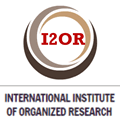Glucose transporters: genetic, molecular and pathophysiological characteristics
Keywords:
glucose transporter, genetic characteristics, molecular characteristics, pathophysiological aspects, diseasesAbstract
Introduction: glucose transport through the plasma membrane of cells plays a central role in cell homeostasis. The entrance to the cells occurs by means of three types of carrier proteins: the sodium-glucose cotransporters, the facilitative glucose transportes and SWEET transporters. Their molecular and genetic characteristics, and the diseases related to their dysfunction are complex issues reflected differently in scientific literature. Objective: to describe the main genetic, molecular and pathophysiological characteristics of known glucose transporters. Methods: a review of the scientific literature was carried out from 2015 to 2019; Google Scholar and the databases Pubmed, Scielo and Ebsco were used. Eighty-two articles were identified, 43 met the inclusion criteria. Results: sodium-glucose cotransporters, facilitative glucose transportes and SWEET transporters were described. A summarized and updated reference was made to the main molecular and genetic characteristics, tissue distribution and expression, substrate specificity, kinetics and, in some cases, the pathophysiology of diseases related to its dysfunction. Conclusions: the genetic, molecular and physiological characteristics of glucose transporters determine their importance in cell metabolism. Genetic mutation is one of the main causes of dysfunction; overexpression of the gene is associated with tumour processes. The expanded knowledge of these transport systems will allow to clarify and investigate several diseases and to design more efficient treatment strategies.Downloads
References
1. Castrejón V, Carbó R, Martínez M. Mecanismos moleculares que intervienen en el transporte de la glucosa. REB [Internet]. 2007 [citado 12 Abr 2018];26(2):49-57. Disponible en: http://www.medigraphic.com/pdfs/revedubio/reb-2007/reb072b.pdf
2. Deng D, Yan N. GLUT, SGLT, and SWEET: Structural and mechanistic investigations of the glucose transporters. Protein Sci [Internet]. 2016 Mar [citado 5 Mar 2019];25(3):546-558. Disponible en: https://www.ncbi.nlm.nih.gov/pmc/articles/PMC4815417/
3. Bermúdez V, Bermúdez F, Arraiz N, Leal E, Linares S, Mengual E, et al. Biología molecular de los transportadores de glucosa: clasificación, estructura y distribución. Arch Venez Farmacol Ter [Internet]. 2007 [citado 12 Abr 2018];26(2):76-86. Disponible en: https://www.redalyc.org/articulo.oa?id=55926202
4. Zhu LQ, Bao ZK, Hu WW, Lin J, Yang Q, Yu QH. Cloning and functional analysis of goat SWEET1. Genet Mol Res [Internet]. 2015 Dic [citado 20 Mar 2019];14(4):17124-33. Disponible en: https://www.ncbi.nlm.nih.gov/pubmed/26681059. https://doi.org/10.4238/2015.December.16.12
5. Anglas PJ, Cueva MS, Vásquez CM, Lira MB, Espinoza BJ, Lucas L J, et al. Identificación y evaluación de transportadores de glucosa SGLT1 y GLUT2 y la incretina Glp-1 en intestino delgado de cuyes (cavia porcellus). Rev Inv Vet Perú [Internet]. 2012 [citado 12 Abr 2018];23(4):399-405. Disponible en: http://www.scielo.org.pe/pdf/rivep/v23n4/a01v23n4.pdf
6. Rodríguez GJ, Cueva MS, Lira MB, Espinoza BJ, Vásquez CM. Identificación inmunohistoquímica de transportadores de glucosa intestinal y absorción de glucosa durante el desarrollo y maduración del intestino delgado de crías de alpacas. Rev Inv Vet Perú [Internet]. 2012 [citado 12 Abr 2018];23(2):126-137. Disponible en: http://www.scielo.org.pe/pdf/rivep/v23n2/a02v23n2.pdf
7. Paz Olivas Y. Síntomas de intolerancia a la lactosa en consumidores de leche deslactosada comparada con la leche sin lactosa del hospital Hipólito Unanue del 2015 [tesis]. Perú: Universidad San Ignacio de Loyola; 2018 [citado 20 Mar 2019]. Disponible en: http://repositorio.usil.edu.pe/handle/USIL/3235
8. Ibsaine O, Ait Idir K, Berrah H, Arada Z. Malabsorción de glucosa-galactosa: a propósito de 4 casos y revisión de la literatura. Acta Gastroenterol Latinoam [Internet]. 2018 [citado 20 Mar 2019];48(1):48-51. Disponible en: http://www.actagastro.org/numeros-anteriores/2018/Vol-48-N1/Vol48N1-PDF11.pdf
9. Bonner C, Kerr Conte J, Gmyr V, Queniat G, Moerman E, Thévener J, et al. Inhibition of the glucose transporter SGLT2 with dapagliflozin in pancreatic alpha cells triggers glucagon secretion. Nat Med [Internet]. 2015 May [citado 20 Feb 2019];21(5):512-519. Disponible en: http://drgetafix.com/wp-content/uploads/2018/08/Bonner-et-al.-2015-Inhibition-of-the-glucose-transporter-SGLT2-with-d.pdf
10. Mioevich G, Estefanía Soledad M. Farmacogenética de los inhibidores del cotransportador sodio-glucosa tipo 2 (iSGLT2) en pacientes diabéticos tipo II [tesis]. Córdoba: Universidad Católica de Córdoba; 2015 [citado 20 Feb 2019]. Disponible en: https://core.ac.uk/download/pdf/47980125.pdf
11. López Hernández MA. Inhibidores del cotransportador de sodio y glucosa tipo 2 (SGLT2), el riñón como objetivo en el control glucémico de la diabetes mellitus tipo 2. Med Int Méx [Internet]. 2017 May [citado 15 Sep 2018];33(3):363-371. Disponible en: http://www.medigraphic.com/pdfs/medintmex/mim-2017/mim173h.pdf
12. RastogiA, Bhansali A. SGLT2 inhibitors tthe windows of EMPA-REG and CANVAS trials: a review. Diabetes Ther [Internet]. 2017 Dec [citado 20 Mar 2019];8(6):1245-1251. Disponible en: https://link.springer.com/article/10.1007/s13300-017-0320-1
13. García Arias MR, Gonzaga López TI, González Fernández NC, Guzmán Ramírez PM, Ángeles Acuña A, Enríquez Peregrino KG, et al. Efecto cardiometabólico de los inhibidores del cotransportador sodio glucosa tipo 2 (SGLT2). Med Int Méx [Internet]. 2018 [citado 20 Mar 2019];34(6):[aprox. 9 p.]. Disponible en: http://www.medigraphic.com/pdfs/medintmex/mim-2018/mim186k.pdf
14. Solá Izquierdo E, Hernández Mijares A. Inhibidores del transporte renal de glucosa. En: Permayer P. Diabetomecum. España: Almirall; 2014. 93-102.
15. Park MS. Molecular dynamics simulations of the human glucose transporter GLUT1. PLoS ONE [Internet]. 2015 [citado 5 Mar 2019];10(4):e0125361. Disponible en: https://journals.plos.org/plosone/article?id=10.1371/journal.pone.0125361
16. Stanirowski PJ, Szukiewicz D, Pyzlak MI, Abdalla N, Sawicki W, Cendrowski K. Impact of pre-gestational and gestational diabetes mellitus on the expression of glucose transporters GLUT-1, GLUT-4 and GLUT-9 in human term placenta. Endocrine [Internet]. 2017 [citado 5 Mar 2019];55(3):799-808. Disponible en: https://www.ncbi.nlm.nih.gov/pmc/articles/PMC5316392/
17. Wang L, Pavlou S, Du X, Bhuckory M, Xu H, Chen M. Glucose transporter 1 critically controls microglial activation through facilitating glycolysis. Mol Neurodegener [Internet]. 2019 [citado 20 Feb 2019];14:2. Disponible en: https://molecularneurodegeneration.biomedcentral.com/articles/10.1186/s13024-019-0305-9
18. Wang J, Ye C, Chen C, Xiong H, Xie B, Zhou J, et al. Glucose transporter GLUT1 expression and clinical outcome in solid tumors: a systematic review and meta-analysis. Oncotarget [Internet]. 2017 [citado 20 Feb 2019];8(10):16875-86. Disponible en: https://www.ncbi.nlm.nih.gov/pmc/articles/PMC5370007/. https://dx.doi.org/10.18632/oncotarget.15171
19. Boyaci C, Behzatoğlu K. Diagnostic value of glucose transporter 1 (GLUT-1). Expression in nested variant of urothelial carcinoma. Turk J Pathol [Internet]. 2019 [citado 5 Mar 2019];35(1):22-27. Disponible en: http://www.turkjpath.org/text.php3?id=1872
20. Yu XJ, Song JC, Du J, Shi YQ, Liu YX, Shen Y. GLUT-1 and its regulating factor HIF-1α expression in epithelial ovarian tumors: GLUT-1 is associated with molecular typing and grade of epithelial ovarian cancer. Int J Clin Exp Pathol [Internet]. 2017 [citado 5 Mar 2019];10(4):4479-4487. Disponible en: http://www.ijcep.com/files/ijcep0044225.pdf
21. Angadi VC, Angadi PV. GLUT-1 immunoexpression in oral epithelial dysplasia, oral squamous cell carcinoma, and verrucous carcinoma. J Oral Sci [Internet]. 2015 Jun [citado 5 Mar 2019];57(2):115-122. Disponible en: https://www.ncbi.nlm.nih.gov/pubmed/26062860. https://doi.org/10.2334/josnusd.57.115
22. Kapoor K, Finer-Moore JS, Pedersen BP, Caboni L, Waight A, Hillig RC, et al. Mechanism of inhibition of human glucose transporter GLUT1 is conserved between cytochalasin B and phenylalanine amides. Proc Natl Acad Sci U S A [Internet]. 2016 Apr [citado 20 Feb 2019];113(17):4711-6. Disponible en: https://www.ncbi.nlm.nih.gov/pubmed/27078104
23. Sánchez del Río M, Mateo Díaz JA, Aguilera Martínez Y, Castillo Monterrey PO. Síndrome de deficiencia del transportador de glucosa tipo 1. Reporte de un caso de rehabilitación. Rev Cubana Med Fís Rehab [Internet]. 2015 [citado 15 Sep 2018];7(2):209-215. Disponible en: http://www.bvs.sld.cu/revistas/mfr/v7n2_15/mfr11215.pdf
24. Centeno Arispe JJ, Escalante Canorio J, Escalante Gavancho C. Síndrome de déficit de GLUT1: Reporte de un fenotipo atípico. Rev Mex Neurocien [Internet]. 2016 Ene-Feb [citado 15 Sep 2018];17(1):98-104. Disponible en: http://www.medigraphic.com/pdfs/revmexneu/rmn-2016/rmn161j.pdf
25. De Giorgis V, Masnada S, Varesio C, Chiappedi MA, Zanaboni M, Pasca L, et al. Overall cognitive profiles in patients with GLUT1 Deficiency Syndrome. Brain Behav [Internet]. 2019 Mar [citado 20 Mar 2019];9(3):e01224. Disponible en: https://www.ncbi.nlm.nih.gov/pubmed/30714351
26. Sandoval-Muñiz R, Vargas-Guerrero B, Flores-Alvarado L, Gurrola-Díaz C. Glucotransportadores (GLUT): Aspectos clínicos, moleculares y genéticos. Gac Med Mex [Internet]. 2016 [citado 12 Abr 2018];152:547-57. Disponible en: https://www.anmm.org.mx/GMM/2016/n4/GMM_152_2016_4_547-557.pdf
27. Pérez Acuña DE. Evaluación del ácido fosfoascórbico como un agente neuroprotector de la enfermedad de Huntington [tesis]. Chile: Universidad Austral de Chile; 2016 [citado 20 Mar 2019]. Disponible en: http://cybertesis.uach.cl/tesis/uach/2016/fcp438e/doc/fcp438e.pdf
28. Gómez-Zoritaa S, Urdampilletab A. El GLUT4: Efectos de la actividad física y aspectos nutricionales en los mecanismos de captación de glucosa y sus aplicaciones en la diabetes tipo 2. Av Diabetol [Internet]. 2012 Jan-Feb [citado 12 Abr 2018];28(1):19-26. Disponible en: https://www.sciencedirect.com/science/article/pii/S1134323012000397
29. Gutiérrez Rodelo C, Roura Guiberna A, Olivares Reyes JA. Mecanismos Moleculares de la Resistencia a la Insulina: Una Actualización. Gac Med Mex [Internet]. 2017 [citado 20 Mar 2019];153:214-28. Disponible en: https://www.anmm.org.mx/GMM/2017/n2/GMM_153_2017_2_214-228.pdf
30. Moreno Pérez P. Alteraciones en el metabolismo de la glucosa en estado de resistencia a insulina y diabetes tipo 2: acción normalizadora del glp-1 y de la exendina-4 [tesis]. Madrid: Universidad Autónoma; 2010 [citado 12 Abr 2018]. Disponible en: https://repositorio.uam.es/bitstream/handle/10486/5911/36536_moreno_perez_paola.pdf?sequence=1
31. Hajiaghaalipour F, Khalilpourfarshbafi M, Arya A. Modulation of Glucose Transporter Protein by Dietary Flavonoids in Type 2 Diabetes Mellitus. Int J Biol Sci [Internet]. 2015 [citado 20 Feb 2019];11(5):508-524. Disponible en: https://www.ncbi.nlm.nih.gov/pmc/articles/PMC4400383/. https://dx.doi.org/10.7150/ijbs.11241
32. González Casimiro CM. Efecto de la glucosa sobre la proliferación mediada por Kv1.3 en células de músculo liso vascular [tesis]. Valladolid: Universidad de Valladolid; 2017 [citado 20 Feb 2019]. Disponible en: http://uvadoc.uva.es/bitstream/10324/27637/1/TFM-M380.pdf
33. Otero Rodríguez T. Identificación de variantes genéticas poco frecuentes en diabetes mellitus tipo 2 mediante secuenciación masiva de amplicones [tesis]. Valencia: Universidad Politécnica de Valencia; 2018 [citado 20 Feb 2019]. Disponible en: https://riunet.upv.es/bitstream/handle/10251/114145/Otero%20-%20IDENTIFICACI%c3%93N%20DE%20VARIANTES%20GEN%c3%89TICAS%20POCO%20FRECUENTES%20EN%20DIABETES%20MELLITUS%20TIPO%202%20MEDIANT....pdf?sequence=4&isAllowed=y
34. Basconi V, Salinas A, Marconi G, Kohen P, Devoto L, Paz D, et al. Caracterización de los glucotransportadores y la acción pleiotrópica de la metformina en células de la granulosa de pacientes con síndrome de ovario poliquístico. Rep [Internet]. 2012 Mar [citado 12 Abr 2018];27(1):19-30. Disponible en: http://www.samer.org.ar/revista/numeros/2012/vol27_n1/3.1trabajoslibres.pdf
35. Riveros MJ, Parada A, Pettinelli P. Consumo de fructosa y sus implicaciones para la salud; malabsorción de fructosa e hígado graso no alcohólico. Nutr Hosp [Internet]. 2014 [citado 15 Sep 2018];29(3):491-499. Disponible en: http://scielo.isciii.es/pdf/nh/v29n3/04revision03.pdf
36. Reyes Cifuentes EF, Silva Munster DA. Análisis de la expresión de los transportadores de fructosa en cáncer de próstata [tesis]. Santiago de Chile: Universidad Andrés Bello; 2015 [citado 15 Sep 2018]. Disponible en: http://repositorio.unab.cl/xmlui/bitstream/handle/ria/2706/a114975_Reyes_E_Analisis_de_la_expresion_de_los_trasportadores_2015_Tesis.pdf?sequence=1&isAllowed=y
37. Janzen C, Lei MYY, Jeong ISD, Ganguly A, Sullivan P, Paharkova V, et al. Humanin (HN) and glucose transporter 8 (GLUT8) in pregnancies complicated by intrauterine growth restriction. PLoS ONE [Internet]. 2018 Mar [citado 20 Mar 2019];13(3):e0193583. Disponible en: https://www.ncbi.nlm.nih.gov/pubmed/29590129. https://doi.org/10.1371/journal.pone.0193583
38. Wang Y, Lin Z, Zhang B, Wang X. Chicory (Cichoriumintybus L.) inhibits renal reabsorption by regulating expression of urate transporters in fructose-induced hiperuricemia. J Tradit Chin Med Sci [Internet]. 2019 Jan [citado 20 Mar 2019;6(1):84-94. Disponible en: https://www.sciencedirect.com/science/article/pii/S2095754818300759
39. Peris Vida A, Marin Serra J, Lucas Sáez E, Ferrando Monleón S. Hipouricemia renal hereditaria tipo 1 y 2 en tres niños españoles. Revisión de casos pediátricos publicados. Nefrología [Internet]. 2019 [citado 20 Mar 2019];30(20):355-361. Disponible en: https://www.revistanefrologia.com/index.php?p=revista&tipo=pdf-simple&pii=S0211699518301759
40. Nemeth CE, Marcolongo P, Gamberucci A, Fulceri R, Benedetti A, Zoppi N, et al. Glucose transporter type 10—lacking in arterial tortuosity syndrome—facilitates dehydroascorbic acid transport. FEBS Lett [Internet]. 2016 [citado 20 Feb 2019];590:1630-1640. Disponible en: https://core.ac.uk/download/pdf/80139442.pdf
41. León Navarro DA. Efecto del ácido nordihidroguayarético sobre el transporte de glucosa en líneas de células leucémicas humanas [tesis]. Chile: Universidad Austral de Chile; 2015 [citado 15 Sep 2018]. Disponible en: http://cybertesis.uach.cl/tesis/uach/2015/fcl579e/doc/fcl579e.pdf
42. Shannon Byers M, Howard C, Wang X. Avian and Mammalian facilitative glucose transporters. Microarrays [Internet]. 2017 Jun [citado 20 Mar 2019];6(2):7. Disponible en: https://res.mdpi.com/microarrays/microarrays-06-00007/article_deploy/microarrays-06-00007-v2.pdf?filename=&attachment=1
43. Wang Y, Shu Y, Gu C, Fan Y. The novel sugar transporter SLC50A1 as a potential serum-based diagnostic and prognostic biomarker for breast cancer. Cancer Manag Res [Internet]. 2019 [citado 20 Feb 2019];11:865-876. Disponible en: https://www.ncbi.nlm.nih.gov/pmc/articles/PMC6340503/
Downloads
Published
How to Cite
Issue
Section
License
Authors who have publications with this journal agree to the following terms:
- Authors will retain their copyright and assign to the journal the right of first publication of their work, which will simultaneously be subject to a Creative Commons License / Attribution-Noncommercial 4.0 International (CC BY-NC 4.0) that allows third parties to share the work as long as its author and first publication in this journal are indicated.
- Authors may adopt other non-exclusive license agreements for distribution of the published version of the work (e.g., depositing it in an institutional repository or publishing it in a monographic volume) as long as the initial publication in this journal is indicated.
- Authors are allowed and encouraged to disseminate their work through the Internet (e.g., in institutional telematic archives or on their web page) before and during the submission process, which can produce interesting exchanges and increase citations of the published work. (See The effect of open access).





 december 1 2025
december 1 2025


